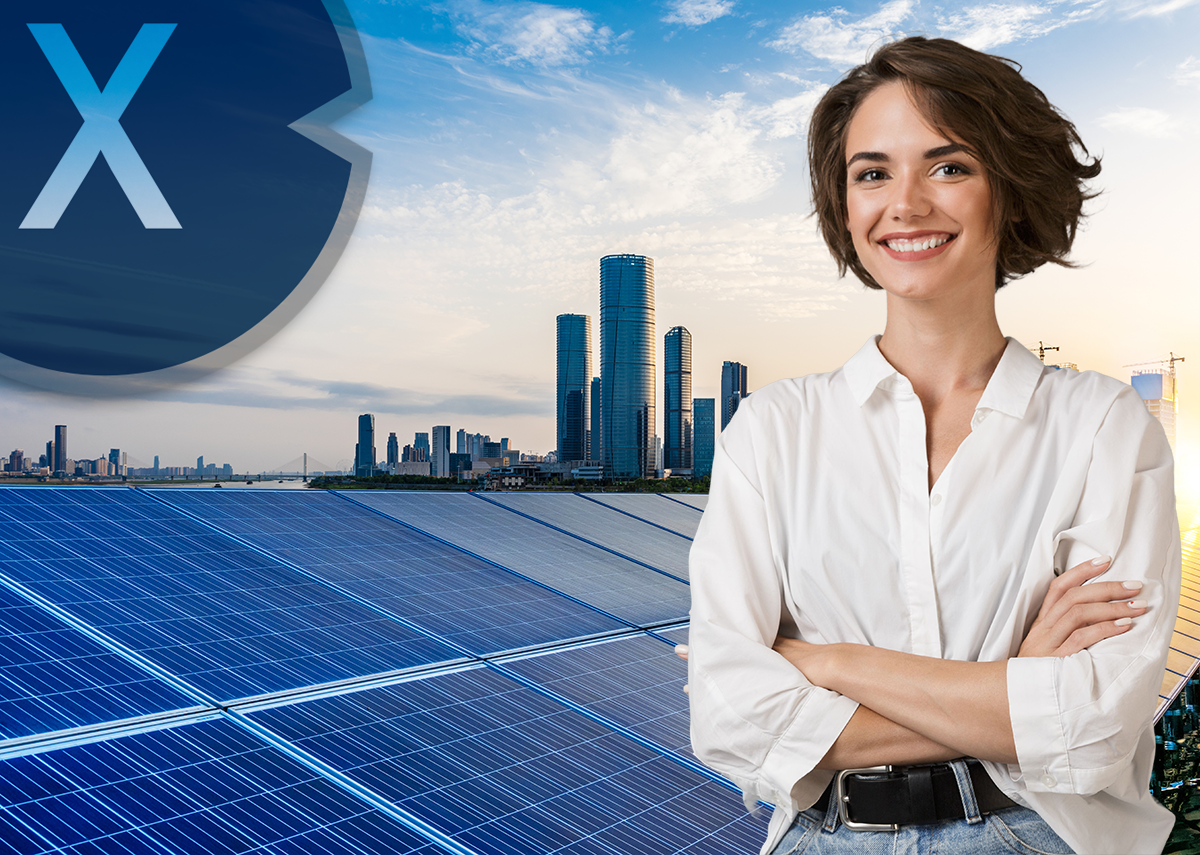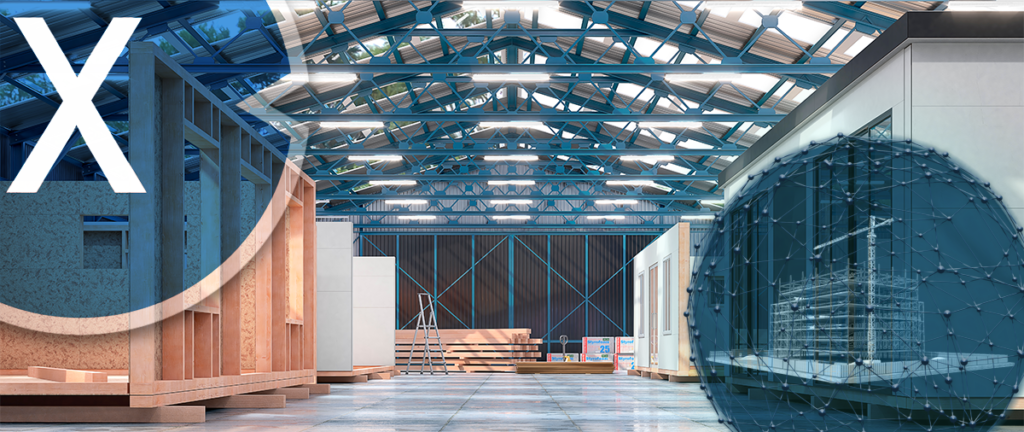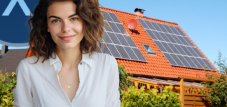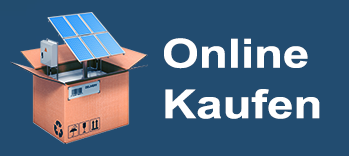Solar system: Install solar on the hall, house or building roof - if necessary with the installation of a heat pump
Language selection 📢
Published on: July 25, 2023 / Update from: July 25, 2023 - Author: Konrad Wolfenstein
Sustainable energy production: The environmentally friendly solar system for building roofs
Solar systems, the efficient and cost-saving solution for sustainable energy. Clever combination: solar system with heat pump for maximum energy efficiency
Installing a solar system on a hall, house or building roof is an environmentally friendly and sustainable way to use renewable energy and reduce CO2 emissions. Solar systems harness the sun's energy and convert it into electrical power that can be used to meet the building's energy needs. Here are some important and interesting details about the solar system and the possible addition of a heat pump:
1. How the solar system works
The solar system consists of photovoltaic modules that convert sunlight into electrical power. The photovoltaic cells are usually made of silicon, which has high efficiency in converting solar energy. The modules are installed on the roof in an optimal orientation to optimally capture sunlight. The electricity generated is either used directly in the building or stored in batteries to maximize self-consumption.
2. Advantages of solar systems
- Sustainable energy source: The sun is an inexhaustible and renewable energy source that does not produce harmful emissions.
- Cost savings: Using solar energy can reduce energy requirements from the public grid, resulting in lower electricity bills.
- Environmentally friendly: Solar systems help minimize the carbon footprint and reduce greenhouse gas emissions.
3. Location-dependent factors
The efficiency of the solar system depends on various factors, such as the geographical location, orientation of the roof, angle of inclination of the modules and possible shading from surrounding buildings or trees. A thorough site analysis is crucial to ensure the best possible performance from the solar system.
4. Integration of storage systems
To optimize self-consumption, storage systems such as batteries can be installed to store the electricity generated during the day and use it later when needed, especially during peak consumption times or at night.
5. Installing a heat pump
A sensible addition to the solar system is the installation of a heat pump. The heat pump also uses electricity to extract heat from the ambient air, the ground or groundwater and use it for heating and hot water preparation in the building. By using renewable electricity from the solar system, the operation of the heat pump becomes particularly sustainable and efficient.
6. Feeding in excess energy
If the solar system generates more electricity than is used in the building, the excess electricity can be fed into the public grid. In many countries there are legal regulations for feed-in tariffs, which further increase the incentive to install solar systems.
7. Long term investment
Installing a solar system is a long-term investment that will pay off over time. Although the initial costs can be high, these are usually paid back over the years through savings in energy costs.
8. Funding programs and support
In many countries there are government support programs and financial incentives to promote the expansion of solar systems. Those interested should find out about such funding opportunities in order to reduce the financial burden.
➡️ Installing a solar system on a building roof is a significant decision that has the potential to make the building's energy supply sustainable. By integrating a heat pump, the use of renewable energies is further expanded, which not only brings ecological benefits but can also lead to long-term cost savings. With the continued development of solar technology and the support of governments and organizations, solar energy is increasingly becoming an attractive option for environmentally friendly and resource-efficient energy production.
📣 Energy-related renovation and new construction, consulting, planning and implementation for industry, retail and municipalities
Our experienced team will support you in optimizing your buildings to reduce energy consumption and promote sustainable energy use with photovoltaics. We analyze your individual needs and create tailor-made concepts that make sense both economically and ecologically. Regardless of whether it is about the energy-efficient renovation of existing buildings or the construction of new energy-efficient structures, we are at your side. Industrial facilities, retail buildings and municipal facilities can reduce their energy costs and reduce environmental impact while improving the comfort and efficiency of their buildings through our tailored solutions.
👨🏻 👩🏻 👴🏻 👵🏻 Energy-saving renovation and new construction, advice, planning and implementation for private households
We offer comprehensive support for private households in the energy-efficient renovation and construction of new buildings with photovoltaics. Our experienced team is at your side to help you advise, plan and implement your sustainable energy solutions. We analyze your energy consumption, identify savings potential and develop tailor-made concepts to improve your energy efficiency. From improving building insulation to installing energy-efficient windows and doors to installing photovoltaic and solar systems - we accompany you step by step to make your home more energy efficient and environmentally friendly. Trust in our expertise and benefit from the numerous advantages that energy renovation and the use of renewable energies offer you. Together we will create a sustainable future for your home.
Plan your solar system for the most common applications conveniently online with our solar system planner!
With our user-friendly solar system planner you can plan your individual solar system online. Whether you need a solar system for your home, your business or for agricultural purposes, our planner offers you the opportunity to take your specific requirements into account and develop a tailor-made solution.
The planning process is simple and intuitive. You simply enter relevant information. Our planner takes this information into account and creates a tailor-made solar system that meets your needs. You can try out different options and configurations to find the optimal solar system for your application.
Additionally, you can save your plan to review later or share with others. Our customer service team is also available to answer your questions and provide support to ensure your solar system is optimally planned.
Use our solar system planner to plan your individual solar system for the most common applications and advance the transition to clean energy. Start now and take an important step towards sustainability and energy independence!

The solar system planner for the most common applications: Plan the solar system online here - Image: Xpert.Digital
More about it here:
In a nutshell: Use renewable energies: solar system and heat pump as an environmentally friendly solution 🔧🌞💡
Summary:
🌞 Solar systems are an environmentally friendly and sustainable solution for generating renewable energy and reducing CO₂ emissions.
Important details about the solar system and heat pump:
- The solar system uses photovoltaic modules, usually made of silicon, to convert sunlight into electricity.
- The advantages of solar systems are sustainable energy, cost savings and environmental friendliness.
- The efficiency of the system depends on location factors such as orientation, angle of inclination and shading.
- Storage systems such as batteries can optimize self-consumption.
- The addition of a heat pump enables the use of renewable energy for heating and hot water preparation.
- Excess electricity can be fed into the public grid, which is financially supported in some countries.
- Installing a solar system is a long-term investment with costs amortized over time.
Hashtags:
#Solar systems #SustainableEnergy #Heat pump #RenewableEnergy #Funding programs
5 tips you should consider when installing a roof solar system
When installing a rooftop solar system, there are a few important points to consider to ensure that the system works efficiently and makes a positive long-term contribution to environmentally friendly energy supply. Here are five tips to help you install your rooftop solar system:
1. Site selection and targeting
- Choosing the right location is crucial for the efficiency of the solar system. Make sure that your roof is as unshaded as possible and has an optimal orientation to the sun. In Central Europe, a southern orientation is most effective, but a southwest or southeast orientation can also achieve good results.
- Remember that shading from surrounding buildings, trees or other obstacles can significantly affect the performance of the solar system. A thorough site analysis or professional advice can help determine the ideal location.
2. Roof statics and load capacity
- Solar panels are not lightweight, so it is important to check the load-bearing capacity of your roof. The system should be mounted safely and stably to withstand wind loads and snow loads. A structural engineer can give you information about the load-bearing capacity of your roof and suggest any necessary reinforcements.
- The roof pitch should also be taken into account. An optimal inclination of around 30 degrees enables better utilization of solar radiation and thus a higher energy yield.
3. Choose high-quality components
- Invest in high-quality solar panels and inverters. Quality components last longer and offer better performance. Compare different manufacturers and pay attention to warranty conditions.
- It also makes sense to look for certifications such as the TÜV seal to ensure that the system complies with applicable safety standards.
4. Assembly by professionals
- Installing a rooftop solar system is not a simple DIY task. It requires specialist knowledge, experience and special tools to assemble the system safely and professionally. It is therefore advisable to have the installation carried out by trained specialist personnel.
- A certified solar installer can install the system professionally, carry out the electrical connection and ensure the functionality of the system.
5. Permits and feed-in tariffs
- Find out about local regulations and permitting procedures for building a solar system. Depending on the region and size of the facility, different permits may be required.
- In many countries there are feed-in tariffs in which the excess electricity generated is fed into the public grid and paid for. Find out about these opportunities to take advantage of additional financial incentives.
➡️ Installing a rooftop solar system requires careful planning to achieve the best possible performance and efficiency. With a well-thought-out choice of location, high-quality components and professional installation, you can create your own environmentally friendly energy source and make a contribution to climate protection.
Technical advice on energy-efficient renovation and new construction with solar solutions and heat pumps/air conditioning systems
I would be happy to serve as your personal advisor.
You can contact me by filling out the contact form below or simply call me on +49 89 89 674 804 (Munich) .
I'm looking forward to our joint project.
Xpert.Digital – Konrad Wolfenstein
Xpert.Digital is a hub for industry with a focus on digitalization, mechanical engineering, logistics/intralogistics and photovoltaics.
With our 360° business development solution, we support well-known companies from new business to after sales.
Market intelligence, smarketing, marketing automation, content development, PR, mail campaigns, personalized social media and lead nurturing are part of our digital tools.
You can find out more at: www.xpert.digital – www.xpert.solar – www.xpert.plus























